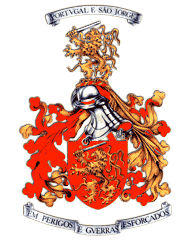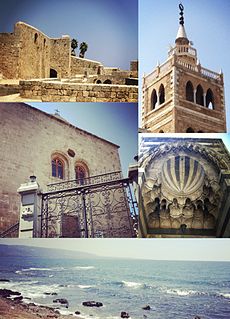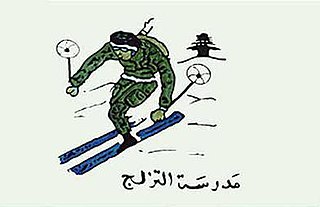
The Finnish Army is the land forces branch of the Finnish Defence Forces. Today's Army is divided into six branches: the infantry, field artillery, anti-aircraft artillery, engineers, signals, and materiel troops. The commander of the Finnish Army since 1 August 2017 is Lieutenant General Petri Hulkko.

The South African Army is the army of South Africa, first formed after the Union of South Africa was created in 1910. The South African military evolved within the tradition of frontier warfare fought by Boer Commando (militia) forces, reinforced by the Afrikaners' historical distrust of large standing armies. It then fought as part of the wider British effort in World War II, but afterwards was cut off from its long-standing Commonwealth ties with the ascension to power of the National Party in South Africa in 1948. The army was involved in a long and bitter counter-insurgency campaign in Namibia from 1966 to 1990. It also played a key role in controlling sectarian political violence inside South Africa during the late 1980s and early 1990s.
In military aviation, a wing is a unit of command. In most military aviation services, a wing is a relatively large formation of planes. In Commonwealth countries a wing usually comprises three squadrons, with several wings forming a group. Each squadron will contain around 20 planes.

The Italian Army is the land-based component of the Italian Armed Forces of the Italian Republic. The army's history dates back to the unification of Italy in the 1850s and 1860s. The army fought in colonial engagements in China, Libya, Northern Italy against the Austro-Hungarian Empire during World War I, Abyssinia before World War II and in World War II in Albania, Greece, North Africa, Russia and Italy itself. During the Cold War, the army prepared itself to defend against a Warsaw Pact invasion from the east. Since the end of the Cold War, the army has seen extensive peacekeeping service and combat in Afghanistan and Iraq. Its best-known combat vehicles are the Dardo infantry fighting vehicle, the Centauro tank destroyer and the Ariete tank and among its aircraft the Mangusta attack helicopter, recently deployed in UN missions. The headquarters of the Army General Staff are located in Rome, at the back of the Presidential Palace. The army is an all-volunteer force of active-duty personnel.

The National Republican Guard or GNR is the national gendarmerie force of Portugal.

The Portuguese Army is the land component of the Armed Forces of Portugal and is also its largest branch. It is charged with the defence of Portugal, in co-operation with other branches of the Armed Forces. It is one of the oldest armies in the world, with its origins going back to the 12th century.

United States Army Forces Command (FORSCOM) is the largest United States Army command and provider of expeditionary, regionally engaged, campaign-capable land forces to combatant commanders. Headquartered at Fort Bragg, North Carolina, FORSCOM consists of more than 750,000 active Army, U.S. Army Reserve, and Army National Guard soldiers. FORSCOM provides enhanced land power gaining operational depth and versatility through a mix of fully integrated Active and Reserve Component forces operating in a joint, interagency, intergovernmental, and multinational (JIIM) environment. Its organizations are expeditionary, campaign focused, and tailorable to provide combatant commanders the required capabilities to be decisive across the range of military operations. FORSCOM was created on July 1, 1973, from the former Continental Army Command (CONARC).

Ibrahim Tannous was a former commander of the Lebanese Armed Forces. General Tannous earned a reputation for honesty and was seen as “a general willing to get his uniform dirty to build a fighting Lebanese Army,” in the words of one Arab authority. Gen. Tannous took over command of the Lebanese Armed Forces (LAF) in December 1982, during the early years of the civil war and oversaw joint operations with the Multinational Force that was in charge of training LAF forces and restoring order to Beirut. Gen. Tannous, who is close to President Gemayel, resigned his post as armed forces commander in June 1984 as a concession to government's opposition factions who were calling for restructuring the army and was succeeded by Michel Aoun. Until Gen. Tannous' resignation, the army was one of the most important institution supporting the U.S.-backed Gemayel Government, however, Tannous' departure marked a major shift in the American-trained armed forces towards a policy closely in tune with Syria's foreign policy and security objectives.
The Regimento de Paraquedistas, based in Tancos, Portugal, is a unit of the Portuguese Army and serves as the instruction center for recruitment and training of the Portuguese paratroopers. This unit includes an entire battalion, acting as support and reserve for Airborne units which contains for example, military war dogs and Airborne Pathfinders and an instruction battalion responsible for the forming of new paratroopers.

The Albanian Support Command is a supporting command of the Albanian Armed Forces, which has as its primary mission the support of the Armed Forces in the areas of procurement and supply, maintenance, transport, inventory, medical supply, and supporting civil-military cooperation for these issues. The Support Command and logistic support units of the AAF should be able to accomplish all requirements to enable logistics sustainment of force operations in every kind of environment.

Operational Command North is a command of the Ukrainian Ground Forces in northern Ukraine. It was formed in 2013 from the Western Operational Command and Territorial Directorate North by reforming the 13th Army Corps.

The Lebanese Army Military Academy is a part of the Lebanese Armed Forces. The academy is situated at Shikri Ghanem military base, Fayadieh and is attached administratively to the command and administration department. It is one of the oldest military institutions in Lebanon, and was founded in Damascus in 1921 under the French mandate.

The Portuguese Paratroopers are an elite infantry assault force, representing the bulk of the airborne forces of Portugal. They were created in 1956 as part of the Portuguese Air Force, being transferred to the Portuguese Army in 1993. Presently, most of the Paratroopers are part of the Portuguese Rapid Reaction Brigade which comprises all 3 special forces troops.
The 2nd Infantry Brigade (Lebanon) is a Lebanese Army unit that fought in the Lebanese Civil War, being active since its creation in January 1983 until its disbandment in 1987, being subsequently re-formed in June 1991.

















